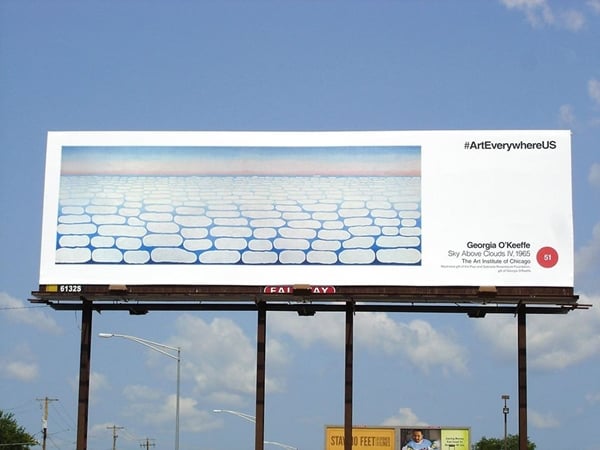Art & Exhibitions
Will ‘Art Everywhere’ Spark Billboard Advertising Comeback?

Photo: Art Everywhere US, via Facebook.

Eileen Kinsella

A report in Pacific Standard examines the link between the current “Art Everywhere” program—whereby five museums have placed 58 iconic American artworks in 50,000 locations across the US for the month of August (see “The 58 Most Beloved American Artworks“)—and the potential for a revival in outdoor advertising, particularly on billboards.
According to the story, besides encouraging a conversation about the role of art in everyday life and boosting recognition of the five institutions participating in the program—the Dallas Museum of Art, the Art Institute of Chicago, the Los Angeles County Museum of Art, the National Gallery of Art, and the Whitney Museum—the Outdoor Advertising Association of America, a trade group and “Art Everywhere” collaborator, is betting the project will get people “looking up and around again instead of down at their digital devices.” Tellingly, other major sponsors of the program include CBS Outdoor, Clear Channel Outdoor, and JCDecaux.
The story outlines the growing gulf between spending on outdoor advertising and digital advertising—in 2014, over 28 percent of the $180 billion spent on advertising in the US will go toward digital, while the outdoor industry will receive just 4 percent. “Brands have limited advertising and people have limited attention spans,” according to the report.
Though the exact link between the “Art Everywhere” program and a hoped-for uptick in the billboard industry is not exactly firmly established here, the piece nonetheless includes some fascinating history and ruminations about attempts to grab consumers’ eyes and attention. Though outdoor advertising was around long before the 20th century, billboards only became standard in size and structure in 1900, which prompted brands including Kellogg’s and Coca-Cola to create mass-produced ads for national campaigns. But as early as 1925, Time magazine said advertisers had already begun to question the effectiveness and actual value of billboard ads.
In 2009, consumer research firm Arbitron produced a study indicating that more than 70 percent of American adults take note of the message on a billboard and make decisions about what to buy while in the car. Other research found that signs along the road linked to either positive or negative emotions could have adverse effects on drivers’ attention and reaction times. While that is potentially dangerous, the piece acknowledges, it is also proof for advertisers that people are reading the ads—or, in this case, looking at the art.